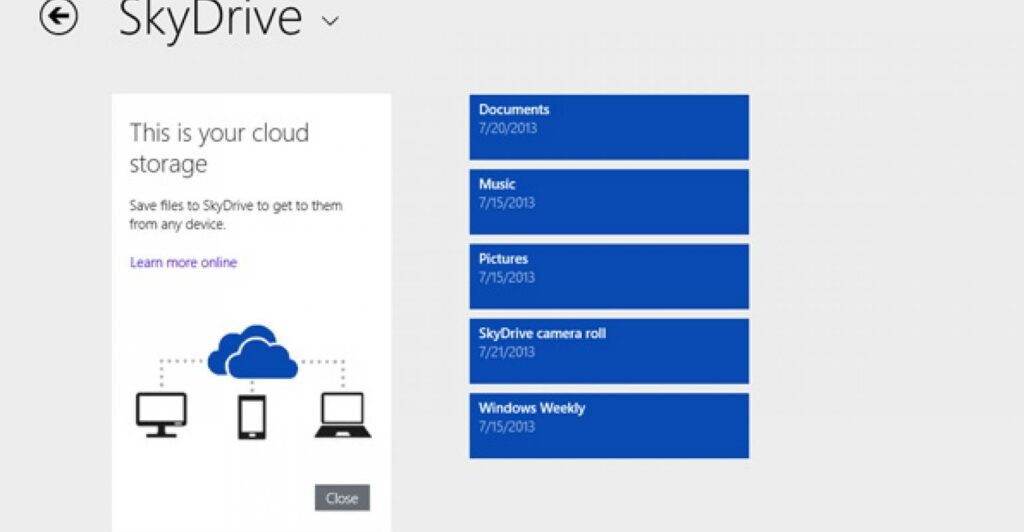How to use SkyDrive in Windows 8

Using SkyDrive in Windows 8 offers a convenient way to store, sync, and access your files across devices. SkyDrive, now known as OneDrive, is Microsoft’s cloud storage service that seamlessly integrates with Windows 8, allowing you to store your files in the cloud and access them from any device with an internet connection. In this extensive guide, we’ll explore everything you need to know about using SkyDrive in Windows 8, from setting it up to accessing and managing your files effectively.
Understanding SkyDrive (OneDrive):
SkyDrive, now called OneDrive, is a cloud storage service provided by Microsoft that allows users to store files and data in the cloud. Here are some key features of SkyDrive:
- Seamless Integration: SkyDrive is seamlessly integrated into Windows 8, allowing you to access your files directly from the File Explorer and other native Windows apps.
- Cross-Platform Compatibility: OneDrive is available on multiple platforms, including Windows, macOS, iOS, Android, and web browsers, ensuring that you can access your files from any device.
- File Syncing: SkyDrive automatically syncs your files across devices, ensuring that the latest version is always available, no matter where you access it.
- Collaboration: OneDrive allows for easy collaboration with others, allowing you to share files and folders with colleagues, friends, and family members.
Now, let’s explore how to use SkyDrive in Windows 8 effectively:
Setting Up SkyDrive:
- Sign In: To use SkyDrive, sign in to your Microsoft account (or create one if you don’t have one already).
- Access SkyDrive: Once signed in, access SkyDrive by clicking or tapping on the SkyDrive tile on the Start screen, or by navigating to File Explorer > SkyDrive.
- Sync Settings: Configure your SkyDrive sync settings to specify which folders and files you want to sync across devices.
Uploading and Managing Files:
- Upload Files: To upload files to SkyDrive, simply drag and drop them into the SkyDrive folder in File Explorer, or use the Upload button on the SkyDrive website.
- Create Folders: Organize your files by creating folders within SkyDrive. Right-click or long-press in the SkyDrive folder and select “New” > “Folder” to create a new folder.
- Share Files: Share files and folders with others by right-clicking or long-pressing on the file or folder and selecting “Share.” Choose who you want to share with and set permissions accordingly.
- Access Files Anywhere: Access your files from any device with an internet connection by signing in to your OneDrive account on the web or using the OneDrive app on your mobile device.
Collaboration and Sharing:
- Real-Time Collaboration: Collaborate with others on documents in real-time using Office Online or the Office desktop apps integrated with OneDrive.
- Version History: OneDrive keeps a version history of your files, allowing you to revert to previous versions if needed.
- Commenting: Leave comments on files and documents to provide feedback and communicate with collaborators.
- Shared Folders: Create shared folders to collaborate on projects or share files with a group of people. Everyone with access to the folder can view and edit its contents.
Security and Privacy:
- Encryption: OneDrive uses encryption to protect your files during transmission and storage, ensuring that your data remains secure.
- Two-Factor Authentication: Enable two-factor authentication for an extra layer of security when accessing your OneDrive account.
- Privacy Controls: Configure privacy settings to control who can view, edit, and share your files and folders.
Conclusion:
Using SkyDrive, now known as OneDrive, in Windows 8 provides a convenient and secure way to store, sync, and access your files across devices. By following the steps outlined in this guide, you can set up SkyDrive, upload and manage your files effectively, collaborate with others, and ensure the security and privacy of your data. So, whether you’re working on a project, sharing photos with friends, or accessing important documents on the go, OneDrive makes it easy to stay productive and connected in the digital age.




